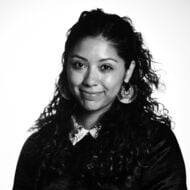
Greetings from City Hall
Five alums in local government tell all about their cities (and one tiny town).
These five alums working in municipal government—from New Orleans to San Antonio to small-town Washington—share their experiences, plus some of their local expertise.
Meet Five Alumni Working in City Hall
Dillon Haas (Mississippi ’12), Mayor of Harrington, Washington. Earned a bachelor’s degree in neuroscience.
Courtney Stuckwisch (Greater New Orleans–Louisiana Delta ’07), Economic Development Policy and Program Manager, City of New Orleans. Earned a bachelor’s degree in English and a master’s degraee in public administration.
Brian Platt (New Jersey ’07), Chief Innovation Officer, Jersey City, New Jersey. Earned a bachelor’s degree in philosophy and a master’s degree in public affairs.
Courtney Wai (Rio Grande Valley ’11), Special Projects Manager, City of San Antonio’s Office of Equity. Earned bachelor’s degrees in humanities and Spanish.
Braden Kay (St. Louis ’05), Sustainability Manager, City of Tempe, Arizona. Earned a bachelor’s degree in American Studies and a doctorate in sustainability.
What called you to this work?
Courtney S.: When I was a kid, I wanted to be the president of the United States. But teaching and working in public schools in New Orleans for seven years confirmed for me the role that local government plays in creating meaningful change for our communities.
Braden: I started gardening at the Upshur Street youth garden in Washington, D.C., at 6 years old. I started cooking at a small business at age 14. I was raised to care about urban development, the environment, and equity at a young age. My work in Tempe is my attempt to let my life speak for my values.
Which stops along your career path have been the most relevant?
Dillon: A minor in economics proves very helpful when analyzing budgets, trends, and opportunity costs.
Courtney W.: I taught poetry at a juvenile detention center for boys, where I worked with some of the wisest and most critically conscious people I have ever met. It was there I understood the compounding and cumulative impacts of structural racism.
Advice for a fellow alum looking to find a job like yours?
Dillon: Start by volunteering, get out into the community you are planning to serve, and keep both ears wide open. And most importantly, always follow through on what you say you are going to do.
Courtney S.: Attending public meetings is a great place to start.
Brian: You are never “stuck” on a particular path. After teaching kindergarten in Newark, I began working for McKinsey & Company, focusing on the health care and pharmaceutical industries. It was an awesome opportunity, but it wasn’t for me. Late one night, in the middle of a grueling project for my day job, I read about this guy running for mayor. I went on his campaign website and sent a message asking if there were opportunities to get involved. The rest is history.
How does your teaching experience apply?
Brian: The behavior management skills I learned through teaching kindergarten are absolutely applicable to my current job working for a city, or any other job for that matter.
Braden: People always tell me that I seem comfortable in front of crowds. My middle school special education classroom prepared me to be engaging and to expect the unexpected.
What stereotypes about your town/city do you want to put to rest?
Dillon: That there is nothing to do here. I know people who are busier and wear more hats in this small town than I knew was possible. Pastors maintain school buses, run food banks, and unload trucks of wheat during harvest. Farmers are EMT/fire volunteers and basketball coaches. Our librarian writes for the newspaper.
Courtney W.: In Texas, San Antonio is portrayed as a poor, dirty city that’s “behind” other cities like Austin. It’s an incredibly racialized stereotype saying that a majority Black and Latinx city cannot be beautiful, which only perpetuates white supremacy.
Braden: Arizona State University, in Tempe, has been ranked the most innovative university in the country for three straight years (according to U.S. News & World Report). We have given up our party-school image for a creative, solution-oriented thinking cap.
Brian: None—it’s all true.
What feature of your community do you wish more people could appreciate?
Courtney S.: With more than 130 annual festivals and more parades than I can count in New Orleans, you can be a lawyer, a doctor, or even a government employee during the day, and at night you can be an artist, play guitar in a band, or join a Mardi Gras dance troupe.
Brian: Our diversity. More than 40 percent of Jersey City residents were born in a foreign country, and 75 languages are spoken here.
Braden: The Sonoran Desert is the second most biodiverse ecosystem in the world after the Amazon. This is not your sand-dune-covered wasteland of the Sahara. We are home to palo verde trees, ocotillos, javelinas (skunk pigs), and the tallest cactus in America, the saguaro.
How does your work benefit kids?
Courtney S.: My current role is a continuation of the mission I shared with Teach For America: to create opportunities for all. I believe everyone should have access to a wealth-building job that allows them to take care of their families.
Courtney W.: We know that individual students, especially students of color from low-income backgrounds, face a myriad of barriers to a high-quality life and self-determination. My job is to help knock down those barriers.
Braden: We’re creating healthy environments, livable cities, and a more sustainable world.
Illustrations by ALEXANDER MOSTOV
Sign up to receive articles like this in your inbox!
Thanks for signing up!
Content is loading...







